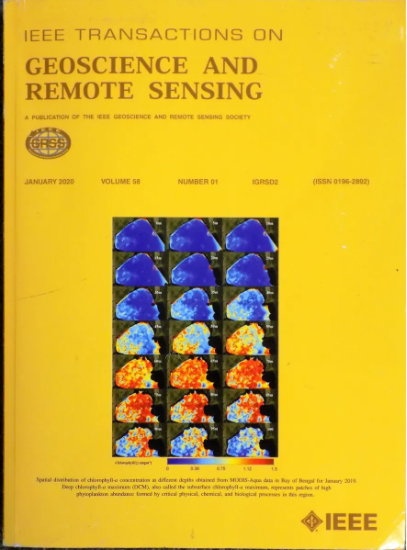盐度为0 ~ 150 PSS时海水p波段介电常数
IF 7.5
1区 地球科学
Q1 ENGINEERING, ELECTRICAL & ELECTRONIC
IEEE Transactions on Geoscience and Remote Sensing
Pub Date : 2025-01-20
DOI:10.1109/TGRS.2025.3532180
引用次数: 0
摘要
本文章由计算机程序翻译,如有差异,请以英文原文为准。
The Dielectric Constant of Sea Water at P-Band for Salinity From 0 to 150 pss
Measurements have been made at P-band (0.707 GHz) to construct a model for the dielectric constant of sea water and extend the model for the dielectric constant to high salinity [ $S \gt 50$ practical salinity scale (pss)]. The measurements are part of research to develop a model for the dielectric constant suitable for future wide-bandwidth (BW) remote sensing of salinity and for application to water bodies, such as the Great Salt Lake with salinity significantly above that found in the open ocean. Measurements have been made at temperatures from 2 °C to 30 °C and salinity from 0 to 138 pss. The data have been fit to a Debye model for the dielectric constant with a single relaxation mode as has been employed at L-band (1.413 GHz), where remote sensing of salinity is currently done. Comparison with contemporary models developed from data at L-band indicates that the L-band model and new P-band model do well at both frequencies for salinity less than 50 pss, but at higher values of salinity, the L-band models diverge from the data. The data have also been used to test at high salinity the mathematical relationship between salinity and conductivity, which is the basis for the pss.
求助全文
通过发布文献求助,成功后即可免费获取论文全文。
去求助
来源期刊

IEEE Transactions on Geoscience and Remote Sensing
工程技术-地球化学与地球物理
CiteScore
11.50
自引率
28.00%
发文量
1912
审稿时长
4.0 months
期刊介绍:
IEEE Transactions on Geoscience and Remote Sensing (TGRS) is a monthly publication that focuses on the theory, concepts, and techniques of science and engineering as applied to sensing the land, oceans, atmosphere, and space; and the processing, interpretation, and dissemination of this information.
 求助内容:
求助内容: 应助结果提醒方式:
应助结果提醒方式:


